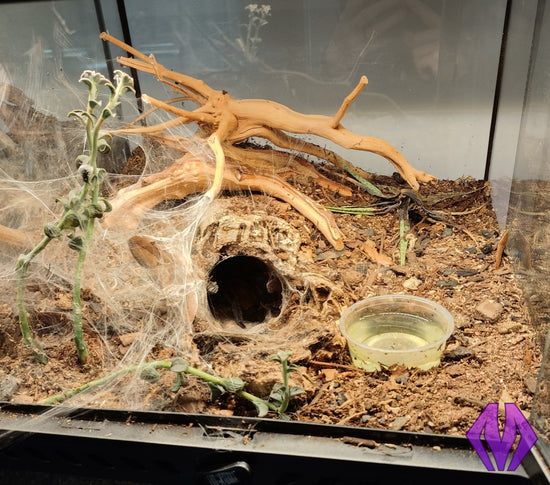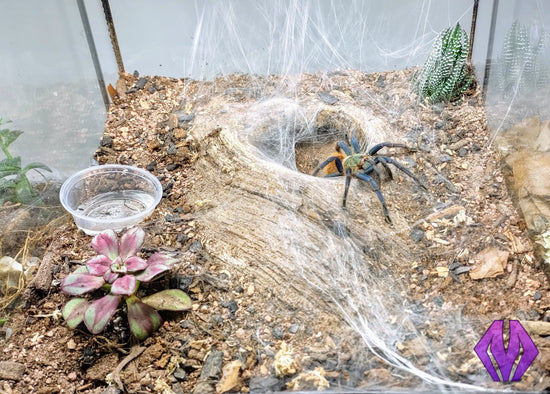Chromatopelma cyaneopubescens care guide
description
the green-bottle blue (Chromatopelma cyaneopubescens) or ‘GBB’ is a flashy New World terrestrial tarantula known for its tendency for being a heavy webbing species. Spiderlings look like little Halloween decorations with their orange and black striping. Adults look much different, with bright blue carapace and legs, and hairy orange abdomens.
-
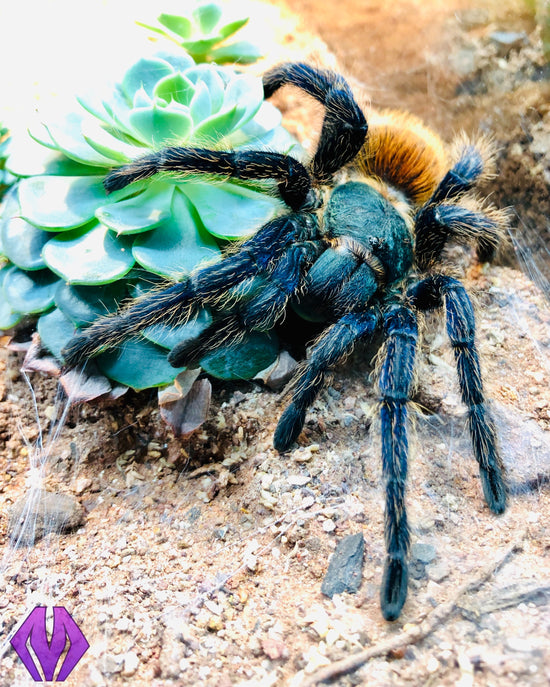
adult female
-
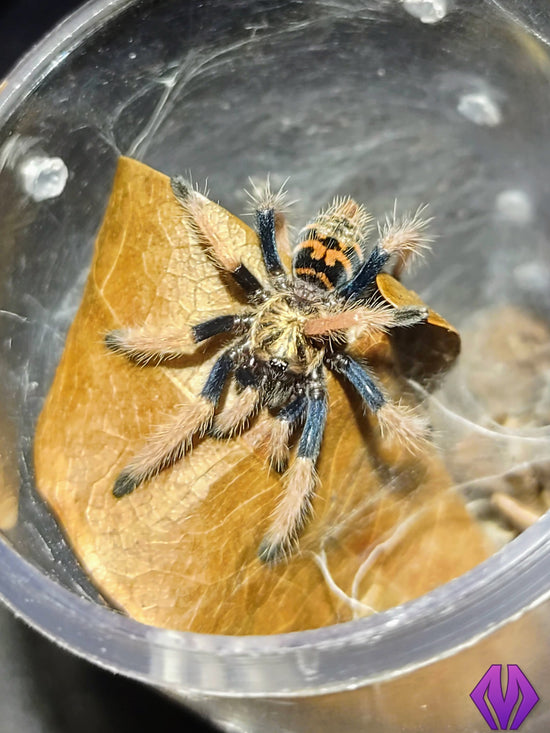
third instar spiderling
-

mature male
natural history
C. cyaneopubescens is endemic to the arid Paraguaná Peninsula of Venezuela. This region undergoes rainy and dry seasons each year, but total precipitation is minimal. Despite the low precipitation rates, average humidity levels are usually above 70%. Daily and nightly temperatures are very warm, with average highs upwards of 85°F and average lows around 76°F (Climate - Punto Fijo). Habitat consists of sandy terrain and cactus forests. In the wild, GBBs are found in silk burrows or hammocks at the base of succulents and scrub brush.
-
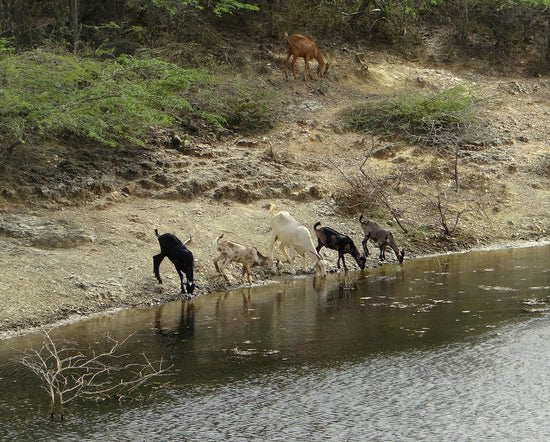
some of the landscape of Montecano Biological Reserve. "Chivo [Domestic Goat] (Capra aegagrus hircus)" by barloventomagicois licensed under CC BY-NC-ND 2.0
-
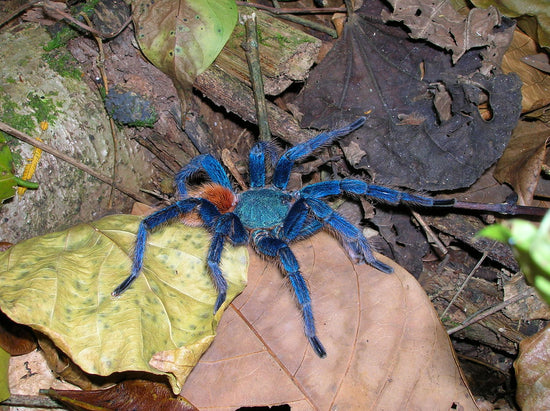
in situ green bottle blue.
"Greenbottle blue / Blau-Orange Vogelspinne / Chromatopelma cyaneopubescens" by Adrián Afonsois licensed under CC BY-NC-SA 2.0
enclosure design
female GBBs max out at around 6” in diagonal leg span with 5-5.5” being the average for an adult. Mature males can vary but are typically smaller with petite bodies and spindly legs. We set up all of our C. cyaneopubescens adults in Exo Terra brand “Mini Wide” 12” x 12” x 12” glass enclosures, which we prefer due to their built-in cross-ventilation feature, double front-opening doors, locking mechanism, and clean look. The lid might pose an issue with tarantula claws getting stuck in the mesh, so consider replacing it with drilled acrylic or Plexiglas; the more ventilation holes the better! We hardscape with wood (cork bark, cholla wood, spider wood, driftwood, etc.), providing web anchor points and potential hides for the spider to choose from. Fill the enclosure with 3-4” of megamix ARID substrate, plant a few dry-tolerant succulent plants (optional), and provide a water dish. We set up spiderlings from 3/4”-2.5” in our purplebox 7x4x4 enclosure similarly, and juveniles from about 2-4” are housed in Exo Terra brand “Nano Wide” 8” x 8” x 8” enclosures.
Although GBBs are a hardy species, we still recommend providing ample ventilated enclosures to prevent stagnant conditions, which can be improved with forced airflow. We keep a small portable fan in our animal room on the low setting. If you choose to use a fan, be sure to place it so it is not blowing directly at your enclosure.
maintenance
at Marshall Arachnids, we strive to take each species’ natural history into account when designing and maintaining vivaria for our spiders. We provide our C. cyaneopubescens adults with a thermal gradient of about 75 to 85°F, with the top of the enclosure being the warmest. Nighttime temps drop no lower than 70°F. Each spider has the opportunity to thermoregulate by moving around the enclosure as they please. We ensure the water dish is full and clean daily with a light misting once or twice per week. We sparingly add water to the substrate only to maintain live plants. For adults, we tong-feed appropriately-sized live dubia roaches or crickets every 7-14 days, but not on a set schedule. For slings, we offer food approximately every 5-7 days or as-needed. GBBs tend to lay down heavy webbing when preparing to molt and may repeatedly refuse to eat. These spiders can safely go weeks on end without food, so do not be concerned if this is the case. Just continue to provide clean water regularly.
fun fact!
Chromatopelma is a monotypic genus, meaning that C. cyaneopubescens is the only known extant species within that genus! Their next closest relatives would be other tarantulas in the Theraphosinae subfamily.






